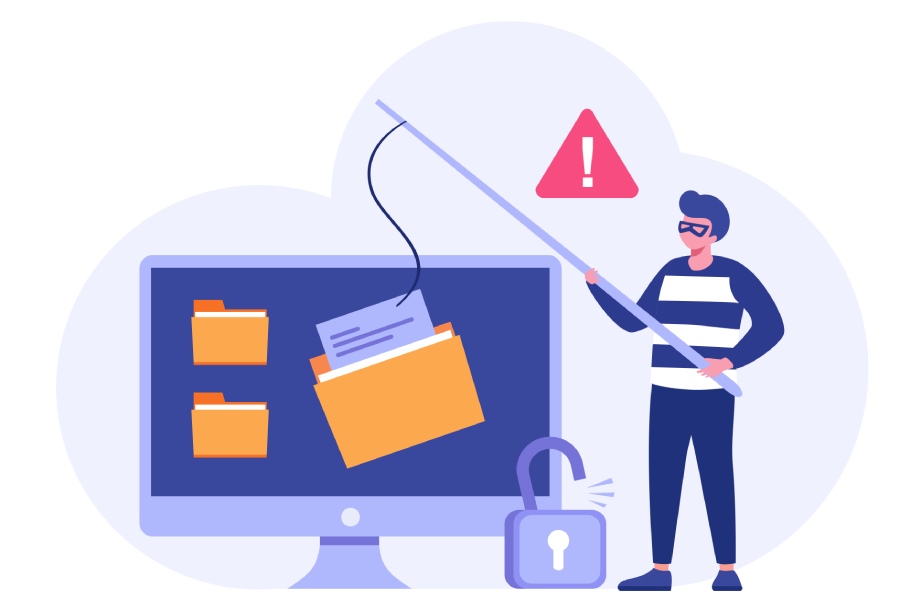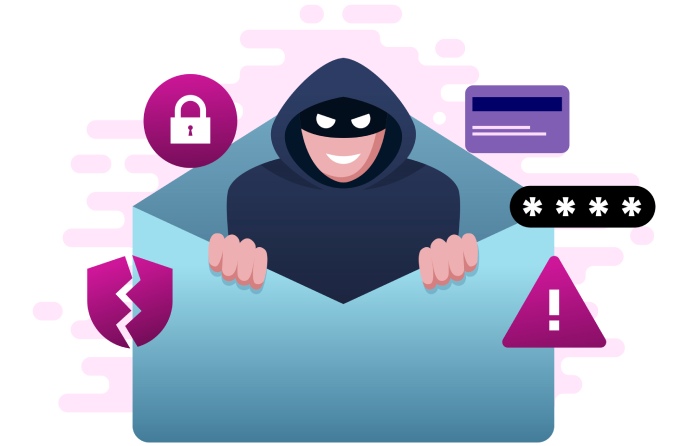With the fast pace of digital transformation today, businesses don’t have much choice other than doing all their transaction processing online, including the creation, storage, and retrieval of documents and records. According to a study conducted by Berkeley’s School of Information Management, University of California, organizations create more than 93 percent of their corporate data electronically. In such a scenario, the need for protecting your electronic records against social engineering attacks like phishing, vishing, spear phishing, SMiShing, etc. is of the utmost importance for any organization. This is the reason all the organizations today are now trying hard to implement a Cybersecurity framework that also encompasses anti-phishing techniques and deploy phishing protection control measures to safeguard their information assets.
The Need For Protecting Your Electronic Records
With increasing digitalization in the technology space, the way we work with our documents and electronic records have changed. We no longer use a typewriter to create paper documents which we then store in file cabinets and shelves; instead, we create electronic documents using word processing software on our computers and other information processing systems and store them on our information system, external drives, or on cloud storage facilities. Such electronic records may take the forms of word-processed documents, email messages, digital spreadsheets, or images.
It is often said that electronic records are more secure than paper documents stored in a physical location. While this is true to a great extent, the downside to electronic records is that phishers can attempt to access them from virtually anywhere in the world, employing such means as email phishing and vishing attacks. The growing sophistication and advancement of hackers and their technology mean that the protection of your documents in cyberspace is becoming more challenging. Besides, though your records are no longer in physical storage, you still have to protect the devices that you use to access them. Findings of the study mentioned above say that of all security breaches and data tampering of electronic records, more than 80 percent happens in the enterprise’s location.
How To Protect Your Online Electronic Documents
- Develop an information management system based on the sensitivity and threat levels of your documents. When you create your documents and organize them for storage, identify those that pose a severe threat to your organization by their loss or breach of security. The risks may be physical, financial, operational, safety, or reputation-related. For instance, categorize documents into different sensitivity-levels like “top secret” (breach of security or disclosure of these documents severely impedes or damages business), “confidential” (breach of these is likely to harm your business), and “unclassified” (not expected to cause harm even if breached). Use these categories as your base for building security and authorization protocols for all your data and their storage.
- Encrypt your electronic documents. By encrypting your records, you convert them into formats that cannot be read by others without authorization even if they have access to them. Select the files to be encrypted based on the threat levels they have. When you have to transfer your documents physically to external drives, you can encrypt the entire device. Proper data organization combined with encryption will make sure that your information is secure in most cases. You can also use the in-built encryption tools in word-processing platforms like Microsoft Word and PDF to secure individual files in this way.
- When you have to share your documents online, verify beforehand the credibility and security of the website to which you are connecting. The ‘HTTP prefix to the address and a padlock icon before it denote secure sites. You can also see the details of security certificates and encryption levels to verify their authenticity.
- Lay down strict policies for the retention of files. Your plan should include documentation of the destruction of critical records if any. Remember that the destruction of documents doesn’t mean the same as their deletion. Also, be aware of any government policies on document retention.
- Make it a habit, and implement a system, to save your electronic records on cloud storage or secure network drives, and avoid storing sensitive information on your PC hard drives. Have an automatic organizing system in place that will file documents according to their threat-level categorization discussed above.
- Use reputed software with the ability to create audit trails. This software will generate a record of who has accessed, viewed, transferred, or edited any information on your documents.
- Have a secure backup plan in place at all times. Don’t assume that you can back up your documents when you smell something fishy. Have a proper backup system for your data including the recovery of files deleted by accident or by design, access to your data offline, etc. Have a backup arrangement that saves files in another location in case of any natural disaster. Many big companies these days have a central database and copies of databases located in different parts of the world.
- Give as much thought to your hardware security as you do to that your electronic records. A common mistake is to be very wary of digital security while neglecting the safety of hardware or paper documents. For example, most people would never tell their account passwords to strangers, but few will think twice before handing over their credit cards to waiters, who are strangers nonetheless.
- Conduct tests and false attacks on your system to see whether hackers may or may not find you a soft target and also to ensure that you have adequate countermeasures to any possible breaching attempt. These tests will reveal vulnerabilities of which you may not be aware.
- Use a well-known Electronic Data Management System (EDMS). There are Electronic Document Management Systems (EDMS) that cater to enterprises with a comprehensive solution for data management, including creation, storage, indexing, recovery, and disposal of electronic records of the organization. Stringent security requirements protect the data stored in these systems.
- Direct a part of your focus on security within your organization. We’ve already mentioned that most of the security breaches and tampering of electronic data occur inside your premises. Implement a need-to-know policy for sharing information even with your employees.
Other Tips For The Protection Of Electronic Records
- Destroy all traces of personal info on the hardware you get rid of or sell, such as old mobile phones, tablets, PCs, Laptops, etc.
- Make it a habit to protect your documents with strong passwords.
- Use digital signatures like AdobeSign and DocuSign for efficient processing of your electronic documents as well as for added security.
- Update OS and security software frequently, including browser updates.
Conclusion
There are multiple steps you have to take to protect your electronic records from people with malicious intentions. You should understand that protecting your electronic documents and other information assets is not a one-time or a one-step process, but rather the continuous implementation of the precautionary measures discussed above, constant improvement, and being aware of the recent happenings in the cyber world.



